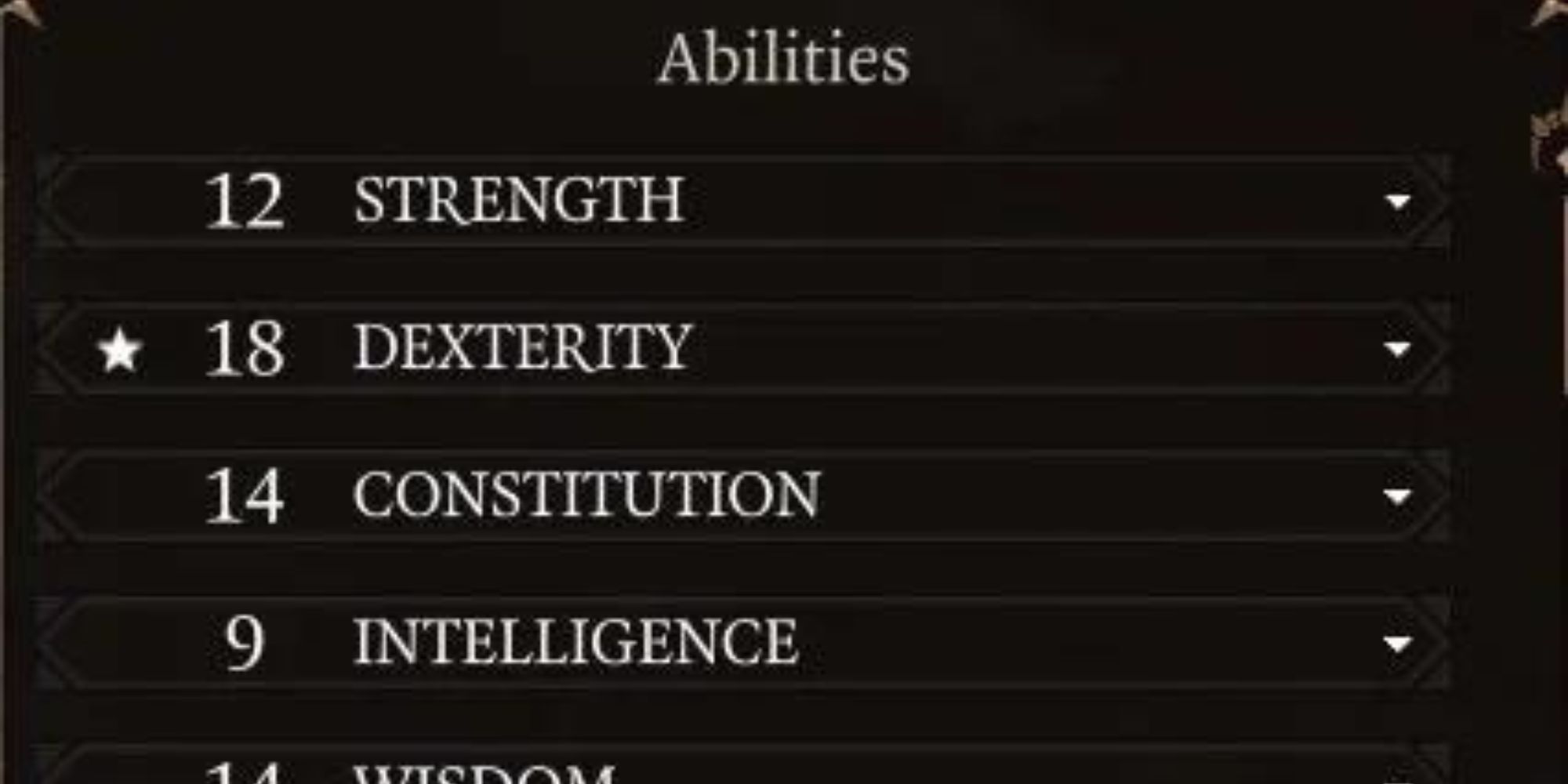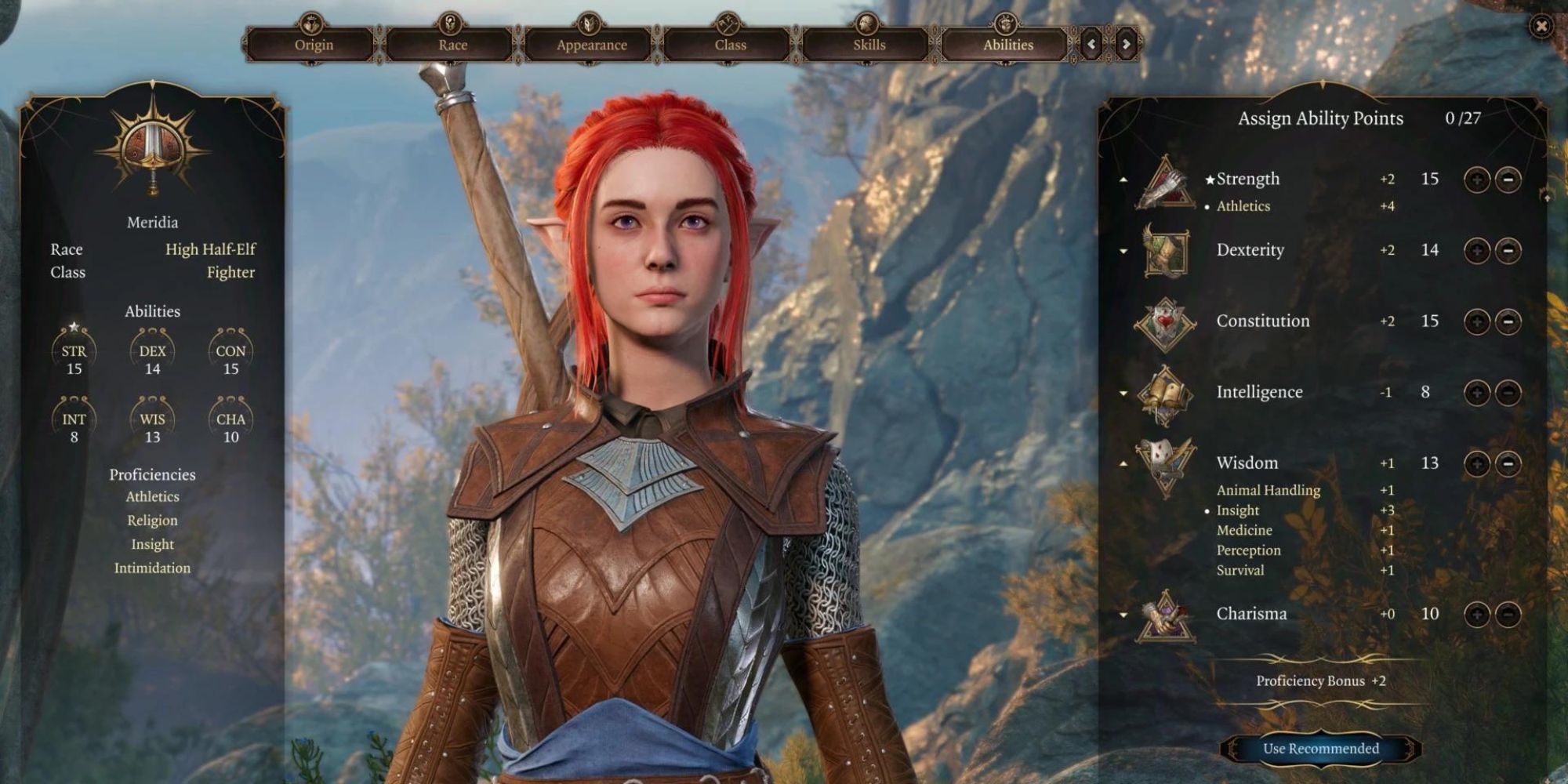Quick Links
Baldur's Gate 3 has a plethora of choices available to you in character creation and level-up. While this makes it a joy to play, it can also be overwhelming for players who aren't familiar with the D&D system. Once you've settled on the right class for you, you'll still need to decide on a Race, Subclass, Ability Scores, Proficiencies, and Feats.
While you can of course choose options that don't "fit" together to tell an interesting story, you'll want to make sure your character is at least competent to prevent disaster. If Monk is your class of choice, keep reading to learn about the best Races, Backgrounds, Stat Arrays, Subclasses, and Feats you can choose - as well as how much wiggle room you have to customize these details without sacrificing power.
Best Race For A Monk
Monks benefit from the abilities of several Races, but there are three standout contenders - Wood Elf, Half-Orc, and Lightfoot Halfling. Which is right for you will depend on which aspect of the game you'd like to focus on - melee fighting, mobility, or out-of-combat utility.
Wood Elf
Wood Elves are the standard racial pick for Monks. This is because all elves get additional weapons proficiencies (long bow, short bow, short sword, and long sword), which is very useful for the Monk. Their usual starting proficiencies are a bit sparse, especially their ranged options.
Additionally, Wood Elves get more base movement speed than any other Race in the game. Considering that a significant part of playing a monk is their mobility, this speed is a welcome addition. For maximum speed, pair this race with the Mobile feature.
Half-Orc
A Half-Orc is a classic race for any melee build due to its extra damage and staying power. As a Half-Orc, you'll fall to 1 HP instead of 0 the first time you would go down in a fight. This gives you the opportunity to get another attack in or heal before dropping unconscious, which Baldur's Gate makes very punishing by requiring you to spend your whole next turn standing up and retrieving your weapon.
If this weren't already enough of a benefit for a class that stands in the line of fire, then Savage Attacks certainly is. Savage Attacks allow Half-Orcs to triple their damage on a critical hit with melee attacks instead of doubling it. While this ability is only useful for critical hits, keep in mind that monks do several attacks each turn. This increases the statistical likelihood that they will score that natural twenty.
Lightfoot Halfling
While the Halfling is slower than some of the other races in the game, they have other incredibly useful advantages. For one, having a free reroll for any natural 1 with Lucky. Given how often you'll be rolling dice, this is sure to save you some embarrassing failures.
Additionally, the Lightfoot subrace gets to roll with advantage on Stealth checks. This is fantastic in Baldur's Gate 3, which rewards sneaking heavily - doubly so because the dexterous Monk can take full advantage.
Best Background For A Monk
The best Backgrounds for a Monk are those which give complimentary proficiencies - Wisdom and Dexterity are likely to be your best stats, so you should aim for skills related to those. A few examples of great Monk backgrounds include Urchin, Outlander, and Folk Hero.
Urchin
Urchin is going to be the best background if you want to utilize the stealth mechanics in the game. It gives proficiency in Stealth and Sleight of Hand, both of which scale off of Dexterity. This frees up your chosen proficiencies for your class to go to something like Religion or Insight.
Outlander
Outlander gives proficiency in Survival, which will scale off of Wisdom. This means you'll be able to make good use of it, especially since Survival is often used to notice things in the game's vast wilderness. The thing that generally makes it inferior to the Urchin background, however, is the second proficiency - Athletics. Athletics is a Strength skill best left to those who wield heavy weaponry - not light-footed Monks. While being able to throw things better and jump is nice, it's simply not as useful to have a plus two to something when you could have a plus four.
Folk Hero
The final Background on this list might surprise you - Folk Hero isn't usually associated with Monks. However, it gives proficiency in Animal Handling and Survival which both scale off of Wisdom. Additionally, these are things that the Monk doesn't normally have easy access to. Keep in mind that if you go this route, you'll need to prioritize Dexterity Proficiencies when choosing your class Proficiencies.
Best Ability Scores And Proficiencies For Monk
When building a monk, your priorities will be on Dexterity and Wisdom. Dexterity will govern how often you hit with your unarmed strikes, and Wisdom is important to raise your chances of affecting enemies with abilities like Stunning Strike. Additionally, both of these ability scores determine your Armor Class, as Monks have a version of Unarmored Defense like the Barbarian. Your secondary priority for Ability Scores will be Constitution, which governs your Hit Points and some saving throws. A good array might look like this:
|
Strength |
10 |
|
Dexterity |
16 |
|
Constitution |
12 |
|
Intelligence |
10 |
|
Wisdom |
16 |
|
Charisma |
10 |
Proficiencies for the Monk are more flexible, but the best ones allow you to replace the party's Rogue because of your high Dexterity and Wisdom. Perception, Insight, Stealth, Sleight of Hand, and Acrobatics are all very helpful. The two you choose for your class will depend on what your background gives you, but every Monk should aim to be proficient in Stealth and Perception.
Best Monk Subclass
The best Monk Subclass will depend on your party composition however, most agree that the Way of the Open Hand is strongest at early levels, and the Way of Shadow is strongest at later levels.
Way Of The Open Hand
Way of the Open Hand Monks is beginner-friendly. To begin with, you'll gain several more options to affect enemy movement (similar to the Battle Master Fighter). As you level, you'll gain a self-heal and a way to deal extra Psychic, Necrotic, or Radiant damage as a Passive Ability. This keeps your character flexible, and effective in most situations. However, it's also a very simple build, resulting in some players getting bored.
Way Of Shadow
Way of Shadow starts out as a solid but balanced subclass for the Monk. However, it becomes unquestionably the best option from level 5 onwards. This is due to the feature Cloak of Shadows, which allows your character to become invisible when in shadow. Starting at level 6, Shadow Monks additionally have the ability to teleport from shadow to shadow, gaining advantage on attacks as they do so. They can also spend Ki to cast Silence, Darkness, or Darkvision (although you'll usually want to use Ki on making Stunning Strike instead).
Best Feats For A Monk
Monks are very self-sufficient, meaning that they don't require a feat to make them good. Often, an Ability Score Improvement will give you more bang for your buck. However, some players might find this boring.
If you'd like to take Feats on your Monk, look into Mobile, and Mage Slayer. Lucky and Tough are also very versatile feats that pair well with any build.
Mobile
This is a standard Monk feature because it gives you extra movement to close in on enemies, and allows you to move without provoking opportunity attacks or being hindered by difficult terrain. Considering how frequently difficult terrain appears in Baldur's Gate 3, this Feat can circumvent a lot of challenges.
Mage Slayer
Mage Slayer is very useful for any player that doesn't want to be debuffed and thrown about by enemy spell casters. Being in melee with an enemy when they cast a spell allows you to immediately attack them as a reaction. In addition, you have advantage on Saving Throws against these spells, and any enemy you hit has disadvantage to maintain Concentration.
Lucky
Lucky is a no-brainer Feat for just about any character - it allows you to gain advantage on an Attack Roll, Ability Check, or Saving Throw three times per long rest. Alternatively, you can make an enemy roll with disadvantage to attack you.
Tough
Tough is a great Feat for anyone likely to be up close and personal with enemies. Additionally, this Feat doesn't become less powerful if taken later on in your playthrough. When you take Tough, your character gains 2 additional Hit Points for every level they have. This works both Retroactively and continues stacking as you level.





